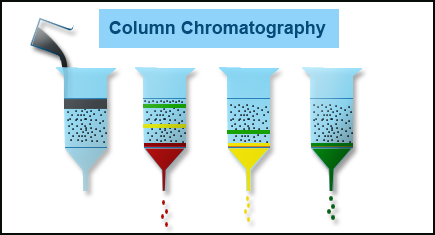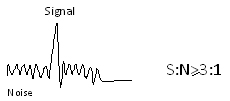Selecting a suitable detector for Gas Chromatographic analysis

When it comes to defining Gas chromatography (GC), we all are aware that it is an analytical separation technique that analyses the volatile substances present in the gas phase.
In this article, we are mainly focusing on the gas chromatography detectors but before that let us have a glance at what is a detector and what are the characteristics of an ideal chromatography detector.
The detector is a part of the instrument which actually acts as transducers of radiant energy converting it into an electrical signal which is sent to the data system. From the time of the ejection, the magnitude of the electrical signal is plotted versus time and ultimately a chromatogram is generated.
There are detectors that are capable of responding to any solute eluting from the column whereas some respond to solute with specific structures or functional groups.
The important characteristics of chromatography detectors are as follow:
- Sensitivity
- Linear range
- Preferably Non-destructive
- Adequate stability and reproducibility
- Good range of temperature
- High reliability
- Low noise
- Small peak value to avert peak broadening and the resultant loss of resolution
- Short response time with an independent flow rate

Gas Chromatographic detectors fall under three distinct categories:
Non –selective-Respond to all compounds coming out of the chromatographic column except the carrier gas.
Selective– Respond to a range of compounds with common physical or chemical characteristics
Specific-respond only to a single chemical compound in the carrier stream
Desirable features of a detector
The desirable features in the detector selected for your application should cover some if not all of the following attributes:
- Reproducibility of response to changes in composition of eluting gas
- High sensitivity
- Large linearity of response
- Least peak broadening and resultant loss of resolution
- Preferably non-destructive
Detector types and their common applications
Flame Ionisation Detector (FID)
FID is the most popular of all detectors. It shows high sensitivity to most organic compounds. The advantages of FID are high sensitivity, large linear response, low noise and ruggedness. However, it is destructive in nature and the sample gets destroyed. Compounds with little or no response include inorganic gases such as CO, CO2, NH3, CS2, NOX, noble gases, halogenated compounds, formic acid and formaldehyde.
Thermal Conductivity detector (TCD)
TCD is also referred to as a universal detector as it responds to most compounds including inorganic gases such as O2, N2 and CO2.It permits detection at both high percent and low ppm levels.
Nitrogen Phosphorus Detector (NPD)
The Nitrogen Phosphorus detector responds selectively to most organic compounds that contain phosphorus or organically bound nitrogen down to the picogram level. Its high level of sensitivity and specificity makes it suitable for analysis of low levels of drugs and pesticides.
Electron Capture Detector (ECD)
Electron Capture detector provides trace analysis of halogenated compounds, nitriles, nitrates and compounds with conjugated double bonds. It finds widespread use in analysis of environmental samples containing organochlorine pesticides, PCB’s etc.
Flame Photometric Detector (FPD)
Flame photometric detector is a highly sensitive detector for phosphorus compounds or alkyl tin compounds. Sulfur compounds include mercaptans, alkyl sulphides, H2S, CS2, SO2 andCO2 in petroleum fractions and pulp-milling processes. Alkyl tin finds use in marine antifouling paints which are applied to boat hulls and ocean oil rigs. Such paints released into the sea pose an environment hazard.
Photoionization detector (PID)
The photoionization detector responds to compounds ionized by UV light .it is used to detect aromatic and unsaturated compounds in drinking water, waste water, soil and sludge samples. Other applications include detection of aromatics such as benzene, toluene, xylene and polynuclear aromatic hydrocarbons in petroleum fractions.
Briefing the GC detector types
| TYPES OF GC DETECTOR | SELECTIVITY | SENSITIVITY | LINEAR RANGE | GASES |
| Flame Ionization Detector | Organic | 0.1-10 ng | 105-107 | Combustion – Hydrogen and air
Makeup – Helium or nitrogen |
| Thermal Conductivity Detector | All compounds except the carrier gas | 10 ng | 105-106 | Makeup – Same as carrier gas |
| Electron Capture Detector | Halogens, nitrates, and conjugated carbonyls |
1-100 pg (nitrates) 0.1-1 ng (carbonyls) |
103-104 | Nitrogen or argon/methane |
| Nitrogen Phosphorus Detector | Nitrogen and phosphorous-containing compounds | 1-10 pg | 104-10-6 | Combustion – Hydrogen and air
Makeup – Helium |
| Flame Photometric Detector | Sulfur or phosphorous-containing compounds | 10-100 pg (sulfur)
1-10 pg (phosphorous) |
Non-linear (sulfur)
103-105 (phosphorous) |
Combustion – Hydrogen and air
Makeup – Nitrogen |
| Photoionization Detector | Mainly used for aromatics and olefins
Others: Aliphatics, phenols |
25-50 pg (aromatics)
50-200 pg (olefins) |
105-106 | Makeup – Same as carrier gas |
Here,
ng = nanogram = 10-9 g
pg = picogram = 10-12 g
Sources:
- https://sielearning.tafensw.edu.au/toolboxes/lab_diploma/Laboratory/StudyNotes/snGCDetectors.htm
- http://mytutorial.srtcube.com/gas-chromatography-gc/environment-science/826-520#7914
- https://www.ssi.shimadzu.com/products/gas-chromatography/fundamental-guide-to-gas-chromatography/detector.html
- http://delloyd.50megs.com/moreinfo/detectors.html




Responses